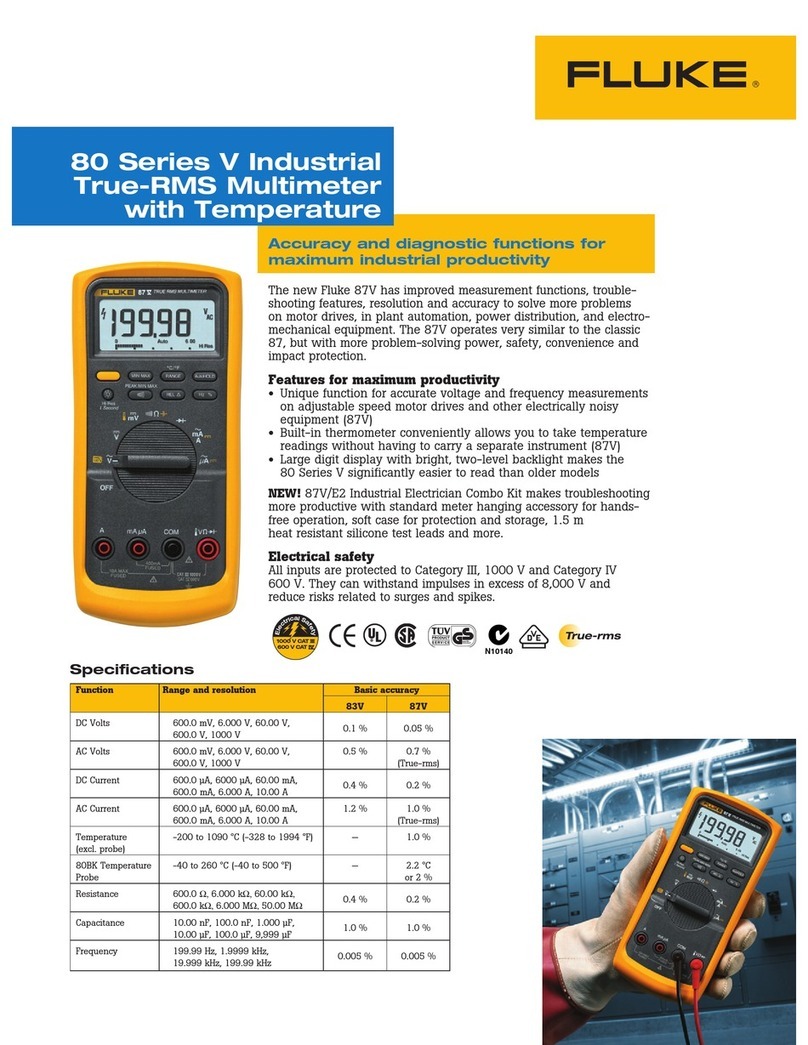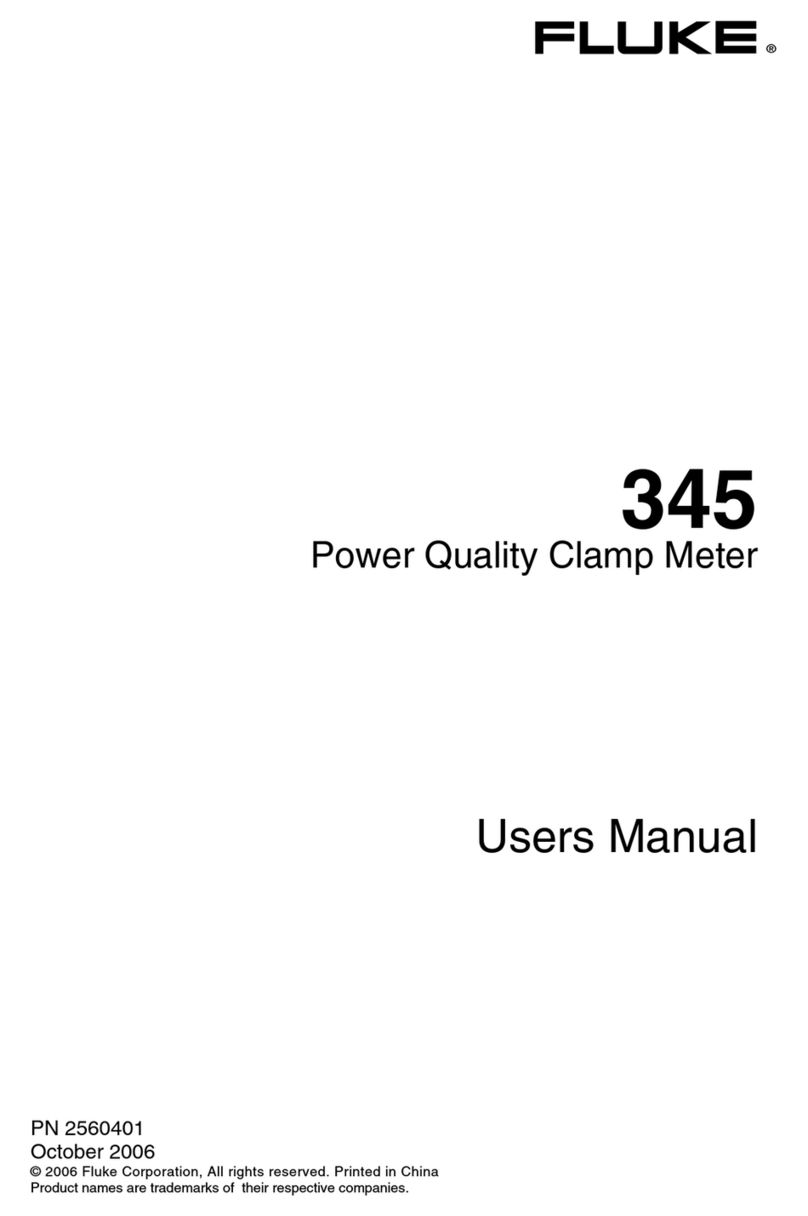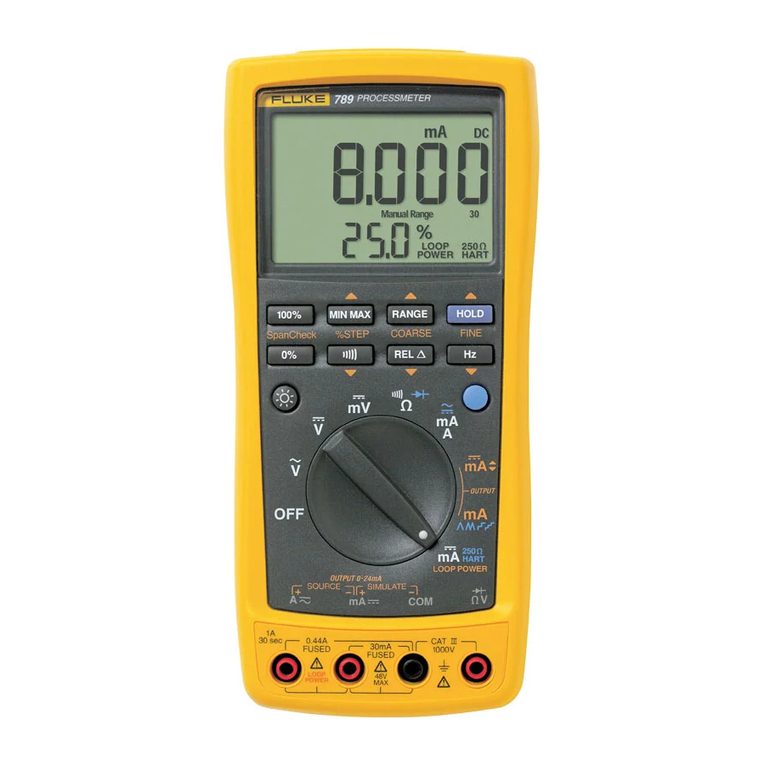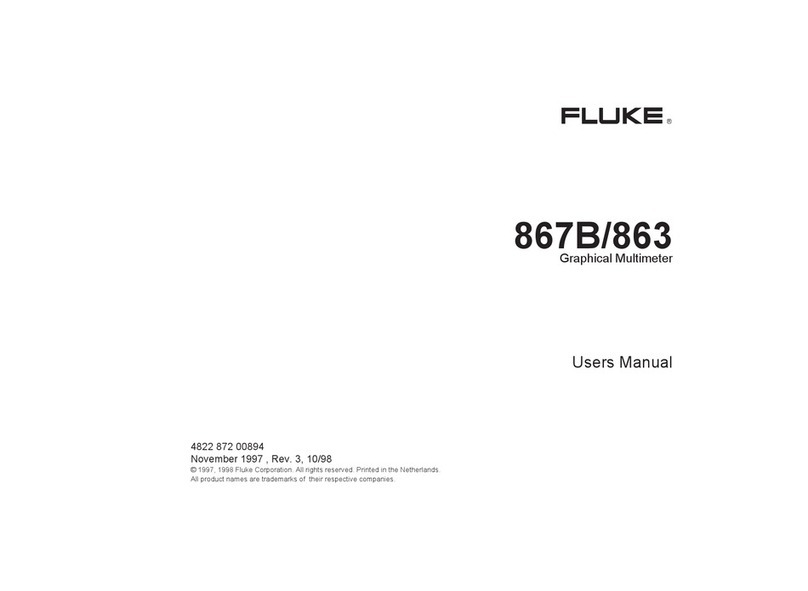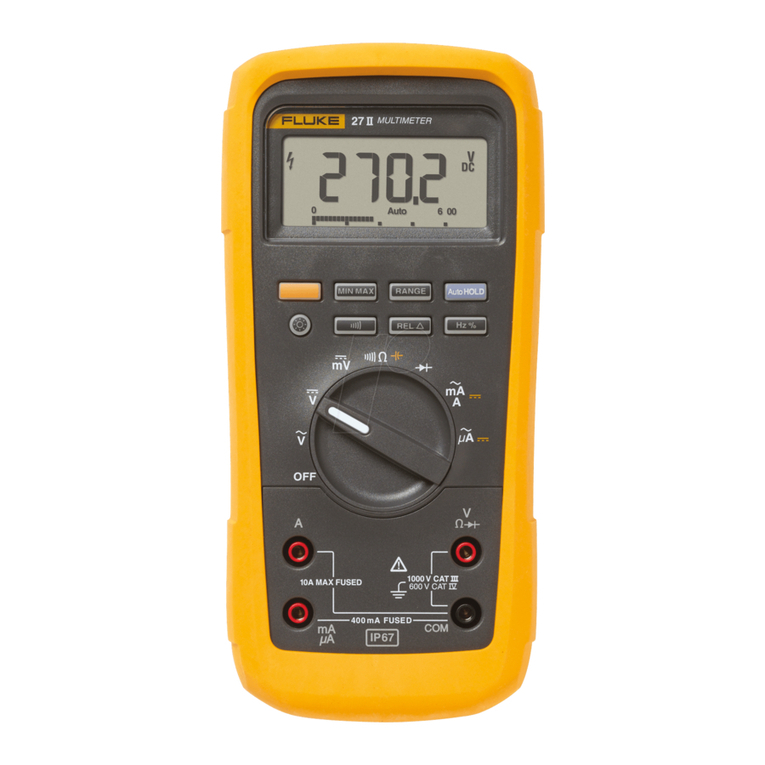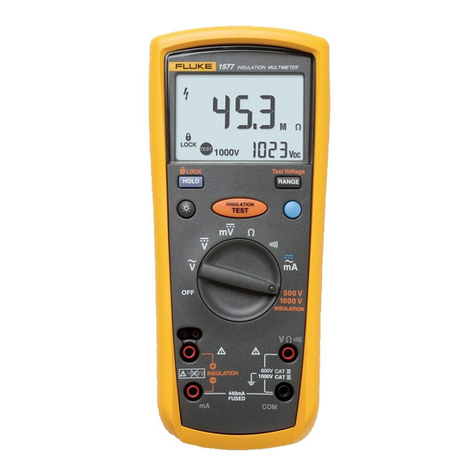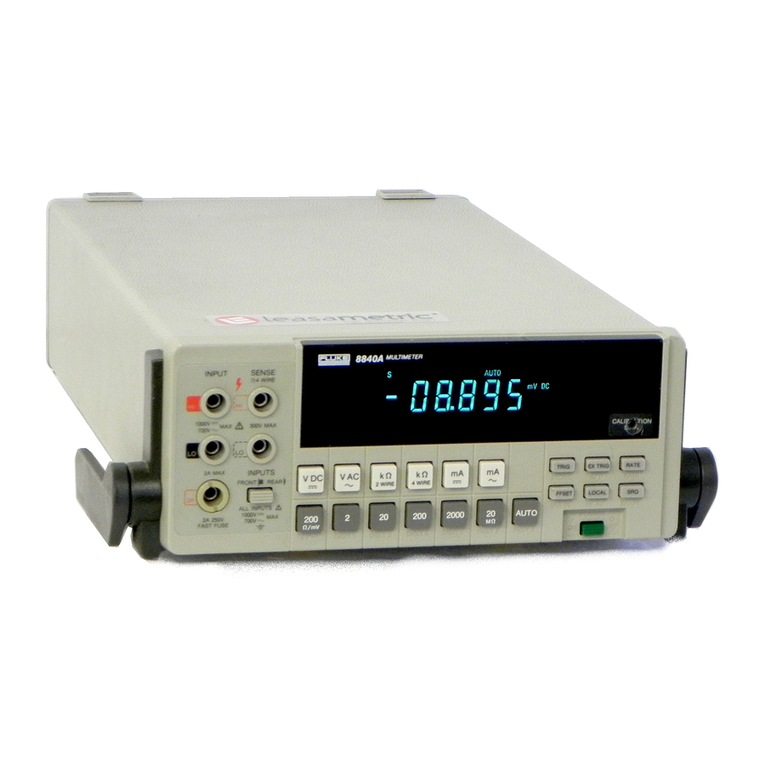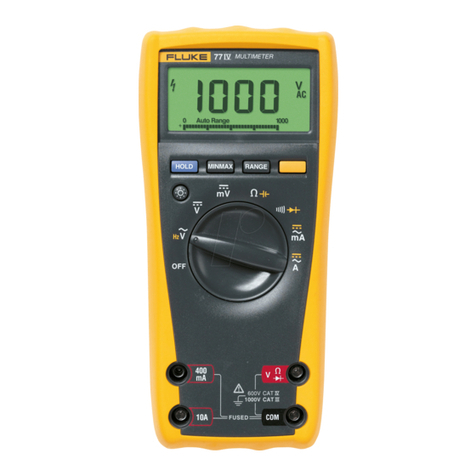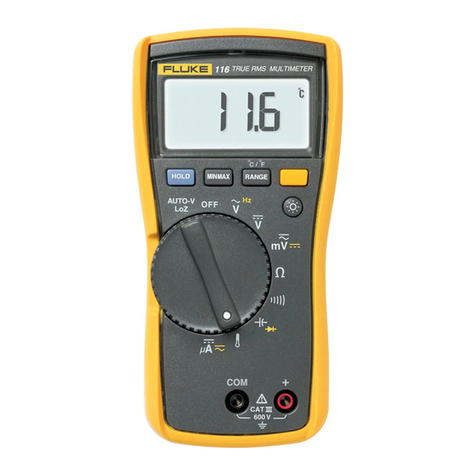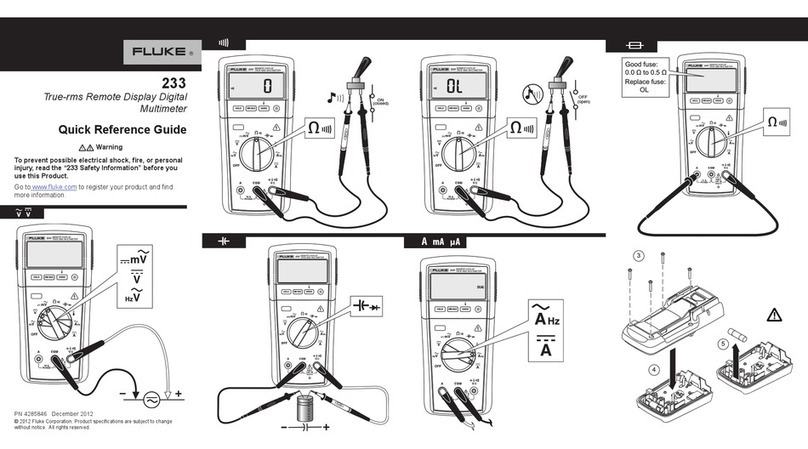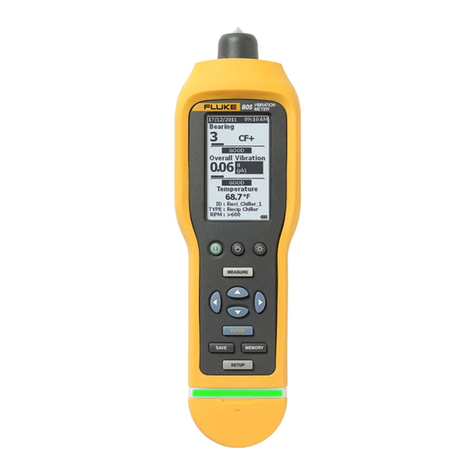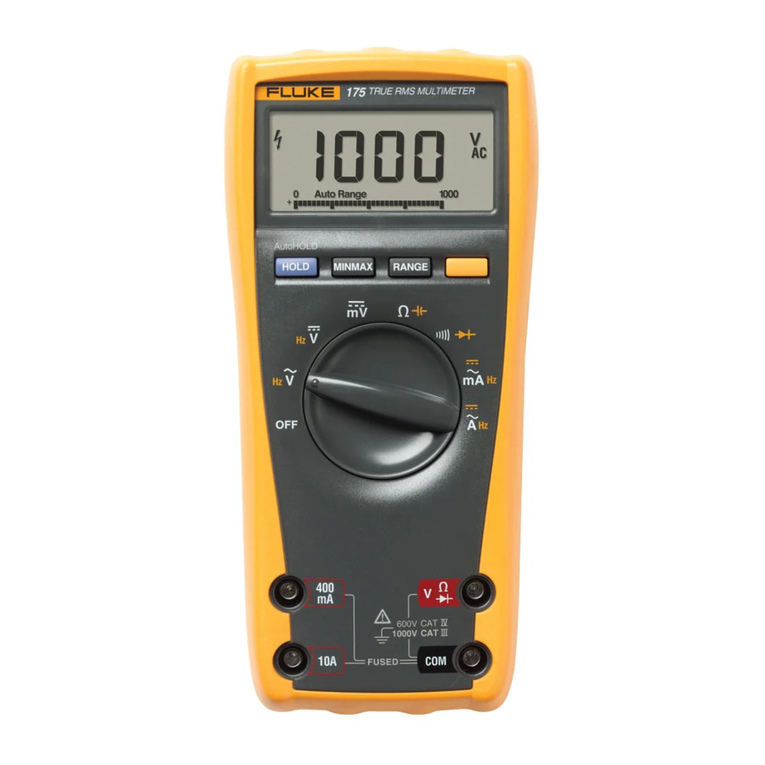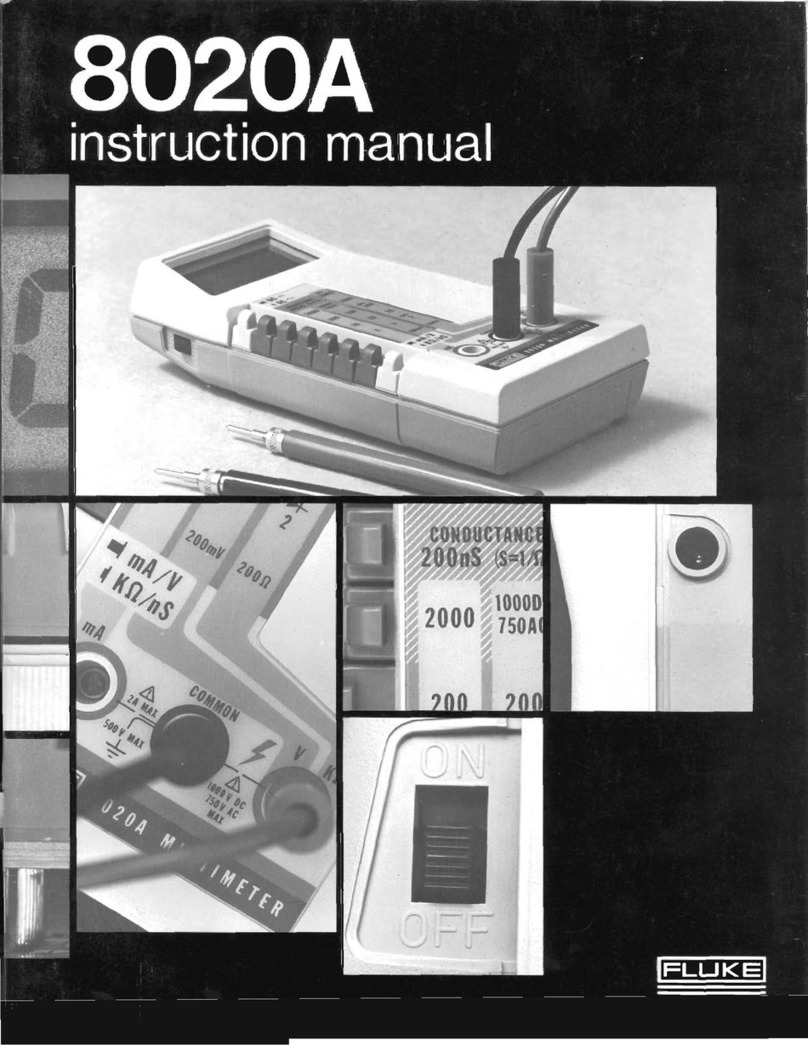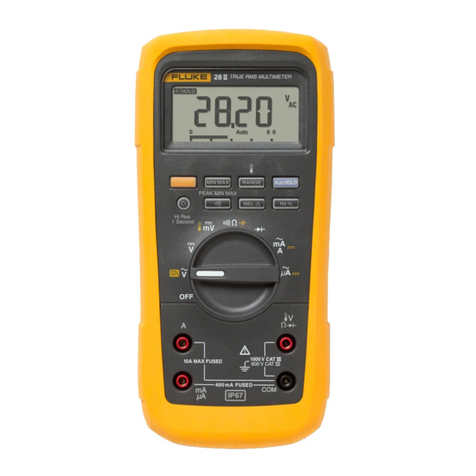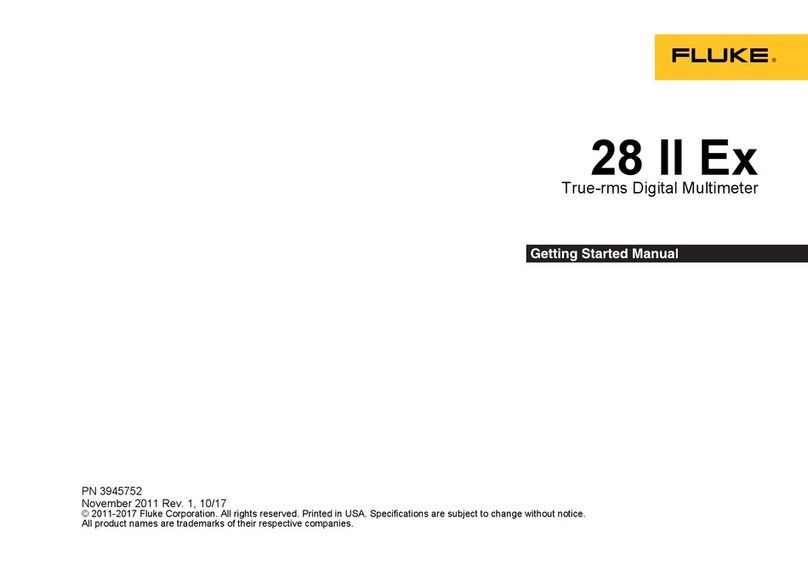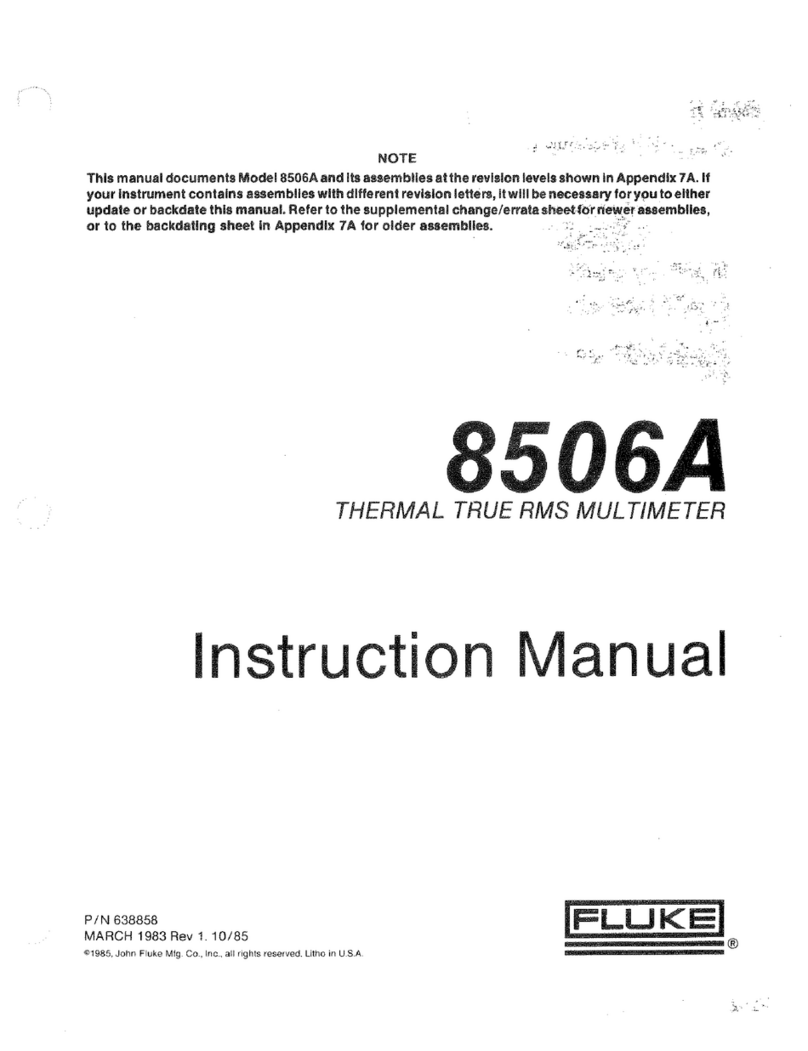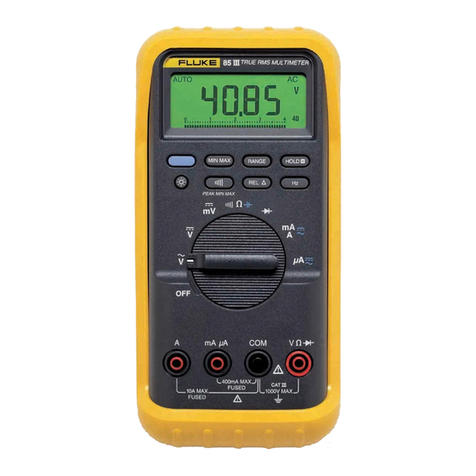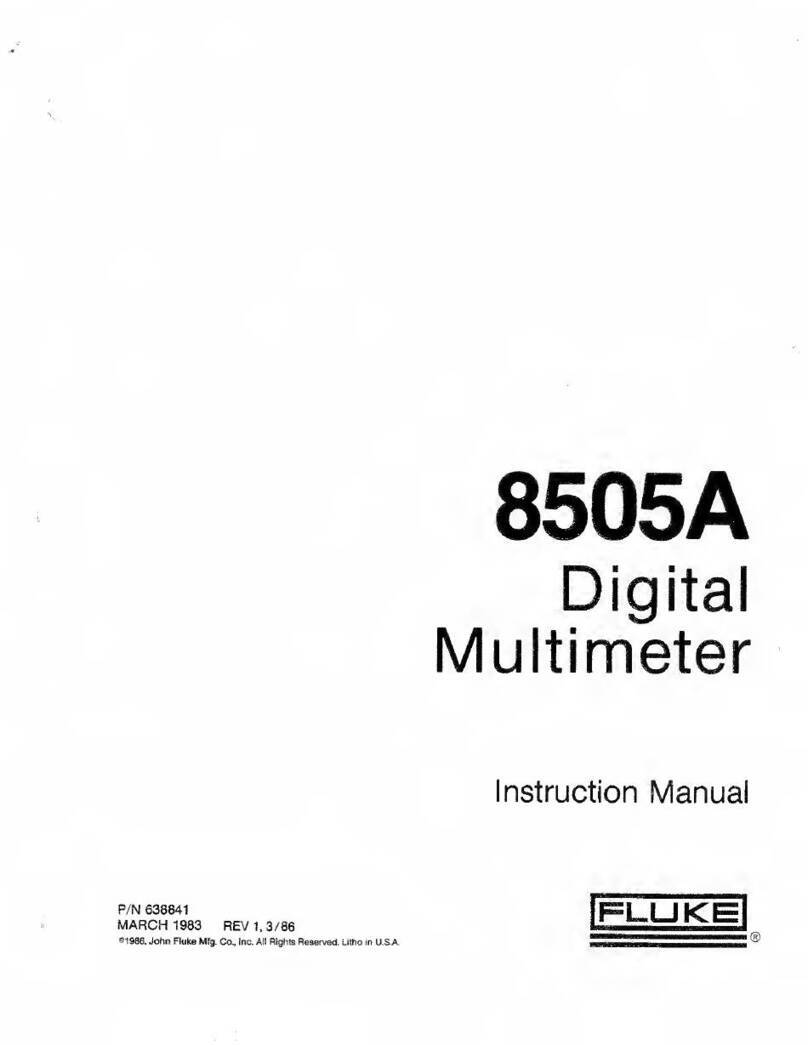
789
Users Manual
2
Address correspondence to:
Fluke Corporation Fluke Europe B.V.
P.O. Box 9090, P.O. Box 1186,
Everett, WA 98206-9090 5602 BD Eindhoven
USA The Netherlands
Orvisit uson the World Wide Web: www.fluke.com
Safety Information
The meter complies with EN61010, ANSI/ISA S82.01-
1994 and CAN/CSA C22.2 No. 1010.1-92 Overvoltage
Category III. Use the meter only as specified in this
manual, otherwise the protection provided by the meter
may be impaired.
A Warning identifies conditions and actions that pose
hazard(s) to the user; a Caution identifies conditions and
actions that may damage the meter or the equipment
under test.
International symbols used on the meter and in this
manual are explained in Table 1.
WWarning
To avoid possible electric shock or personal
injury:
•Do not use the meter if it is damaged.
Before using the meter, inspect the case.
Look for cracks or missing plastic. Pay
particular attention to the insulation
surrounding the connectors.
•Make sure the battery door is closed and
latched before operating the meter.
•Remove test leads from the meter before
opening the battery door.
•Inspect the test leads for damaged
insulation or exposed metal. Check test
lead continuity. Replace damaged test
leads before using the meter.
•Do not use the meter if it operates
abnormally. Protection may be impaired.
When in doubt, have the meter serviced.
•Do not operate the meter around
explosive gas, vapor, or dust.
•Use only type AA batteries, properly
installed in the meter case, to power the
meter.
